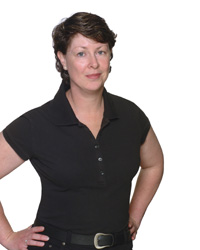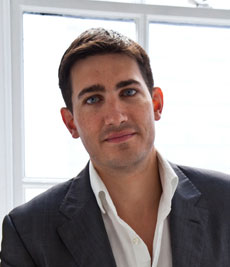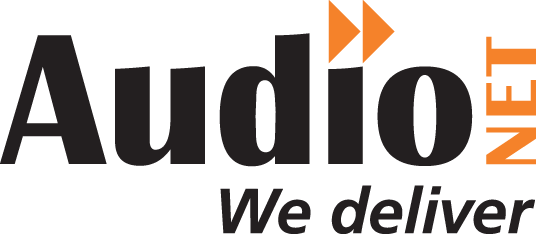NAB key technology issues

More than 140,000 delegates converged at the recent National Association of Broadcasters Conference in Las Vegas, to see what's happening at the cutting edge.
AudioNET Directors Dave Cox and Verity Webb (right) provided their insights for Radio Today, on the technology issues attracting attention.
The list below represents technology themes or ideas that recurred repeatedly in sessions on topics ranging from advertising, social media, listener relationships, research, global radio and consumer-driven media.
Cloud Impact
TV technology is really where the cloud focus is at the moment – but there are some key ideas radio can use.
For video production companies and TV Networks data storage is about to become a critical issue. One company showcased at NAB has raised $3m in venture capital to build a private cloud where video companies can work together on projects and store files. AFrame CEO David Peto (pictured below), who's UK-based, said his investors understood that generic solutions don't fit broadcasters.
"People who do generic cloud don’t understand TV: the complexity of workflow, the amount of data, the data rates required and the flexibility needed," he said.
Another cloud company on the cutting edge is Strategic Blue – buying cloud space in bulk, and then re-selling it at in smaller chunks at affordable monthly rates. This way, smaller video production companies can afford high bandwidth data storage.
 Interoperability
Interoperability
Not just a tongue-twister, but an issue mentioned by engineers and media commentators alike. David Peto from AFrame put it this way:
" The cloud knits together all the skill sets that anyone wants – it's all about collaboration and alliances."
From a tech point of view, it means making sure all your systems can connect with each other – and with systems outside your radio network. File transfers to and from: media agencies, production studios, music companies.
It also means a single point of broadcast for FM, IP DAB and mobile phone streams.
Files that are locked inside systems and need manual data entry, or manual data transfer make it inefficient and difficult for companies (and staff) to work clients, suppliers, and other stakeholders.
From a user perspective, it's all about connecting Facebook, Twitter and tablets and TV broadcasts (according to the panellists) so you can watch something, on the big screen, interact via your tablet, and share it with friends.
There are already companies in the US working out how to make TV remotes interact with tablets and phone apps.
Standards
There are two major projects in the USA revolving around standards and both involve representatives from the American National Advertisers and Association of Advertising Agencies.
One relates to audience measurement and the other to workflow.
The measurement project, which also includes the Interactive Advertising Bureau, is trying to find one metric that can provide a comparative cross-platform indicator for advertisers. There are two key reasons for this: the proliferation of media platforms which makes it difficult for advertisers to assess spending value in any one area; and the haphazard manner in which the various monitoring agencies in the USA have approached the issue.
Radio ratings will have to comply with any new metric, because when fully established, it will be mandated by the Media Ratings Council. Currently, the metrics project is assessing the application of TV's Gross Ratings Points to online advertising views.
Another standards project being pushed by national advertisers and advertising agencies surrounds workflow efficiencies through a common naming protocol (i.e. the Piñata GUID) for all advertising, everywhere.
The belief is that ad.id should make it easier to track ads through the multitude of companies and people involved in creating, producing and approving an ad for broadcast or publication.
According to the ANA and 4As, more efficient workflow will save advertisers and agencies in the US between $1-2b a year.
In Australia, CRA received recommendations for key number naming standards two years ago, along with the Piñata protocols, but the key number standards were never implemented.
It is interesting to note that the radio staff on that working party were prescient enough to know that a simple thing such as standard file numbering, could significantly improve the efficiency and accuracy of radio staff who have to type key numbers into booking and broadcast software.
Specifically on radio standards, Nick Piggot (pictured below) from the UK-based RadioDNS project, was passionate that radio must develop standards so it can take full advantage of other technology developments.
"Radio is national, but smartphones are international, so radio needs an open standard." Nick's mantra is that radio should agree on the technology and compete on the content. Which leads nicely into the final technology theme:
 Collaboration
Collaboration
The three key points above really converge here. It's worth remembering, before reading further, that the whole point of technology (particularly in radio stations!) should be to help us work better. The added rider of technology in 2012 is that it should require no training.
However, technology and collaboration is like the chicken and egg dilemma: which comes first? In the case of advancements in Cloud and interoperability, technology is driving collaboration.
In the case of RadioDNS, collaboration is driving technology advancements.
RadioDNS is worth special mention because its RadioTAG feature won the 2012 NAB Technology Innovation award. RadioTAG allows listeners to bookmark something they hear and go back and listen to it when they want.
It works on FM, HDRadio, DAB, DAB+ and Internet streaming and basically provides the link between Internet IP and other forms of broadcasting.
The steering committee includes representatives from the EU, UK, and USA as well as Australia. Former CRA Technology Director Richard Morris is CRA's rep on the steering committee and Austereo is a project supporter.
RadioDNS currently provides code for an electronic program guide, station IDs, text and images.
 So there you have it. The AudioNET take on radio station technology themes from NAB.
So there you have it. The AudioNET take on radio station technology themes from NAB.
If you're wondering why smartphones aren't on the list it's because US radio is behind Australia in this area. Smartphones and tablets were constantly referred to throughout the conference but US radio stations appear to be behind Australia in this regard. SMS messaging campaigns are still considered modern and many mid-market radio stations don't have their own app for streaming.
Stations are buying apps – simply so they can sell banner ads – but the apps bear little or no relationship to what's happening on the air.
However, one thing the US and Australian radio have in common, is that what we're offering our listeners and advertising clients is a compromise on what they'd really like.
Dave Cox is the CEO, and Verity Webb is the Marketing Director of Audionet. You can contact them Dave here and Verity here.


